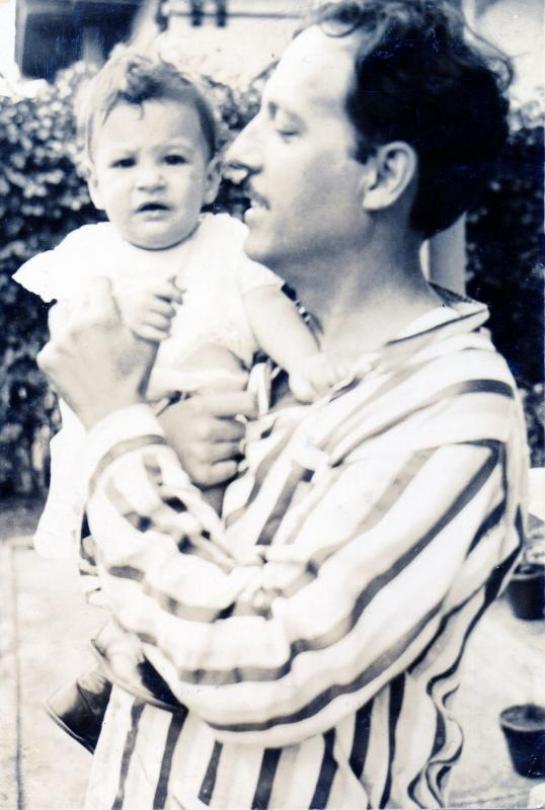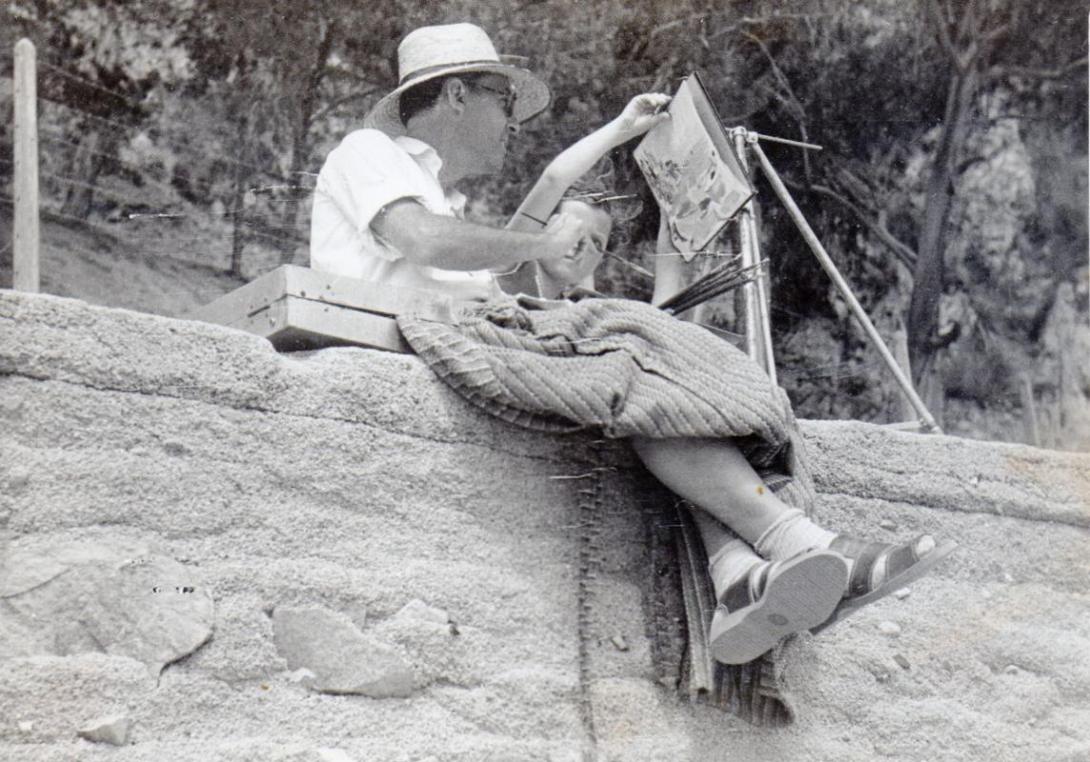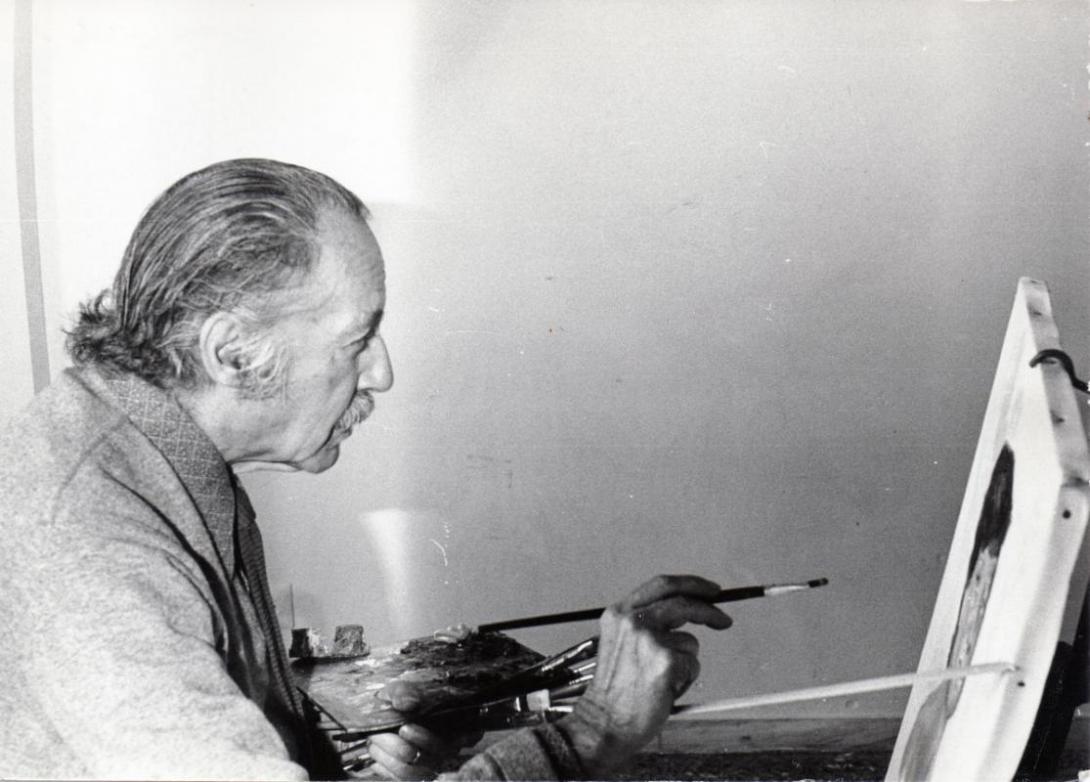Josep Rovira i Soler
Josep Rovira i Soler was born on February 6, 1900 in Santiago de Cuba. His parents were Catalans (originally from Moja, Spain) and they had five children, four boys and a girl. However, the girl died very young of measles. His parents traveled to Cuba to participate in the family business of tobacco, which explains the birth of Pep so far away from home. Although he seemed to feel more Catalan than Cuban, he maintained his Cuban nationality until the end of his days.
He was born with malaria, and until he was two years old, he was called "between life and death", because his health was precarious and subject to continuous ups and downs. He was fed by a cow, which was provided solely for him, and from time to time they wrapped him with a freshly slaughtered calf. At the age of two, on the boat trip back to Spain, he was healed for good of his illness.
His family lived in Vilafranca del Penedes for a few years at the family wine business. They lived there for five years before returning to Cuba where they stayed for two years. When they returned to Spain, Pep started going to school. At this very early period of his life he began to discover his skills as a painter, filling the margins of his study books with drawings and portraits of classmates. Until the age of sixteen he studied with the Jesuits. Later, his father wanted him to study commerce, as he wished to send him to Cuba to work in the family business. Pep, however, did not like the idea and asked his father to let him dedicate himself to painting. His father, angry at this suggestion, replied that he would never deny him food and shelter, but that he would not receive any help to fulfill his vocation.
Belonging to a bourgeois family did not make things easy for him, because dedicating himself to painting as a profession implied a more bohemian and unorthodox way of life than they were accustomed to at home: his three brothers’ professions were lawyer, chemist and accountant. The only person who showed him some moral support was his mother, Rosa, who provided him with money, so that, at twenty years old, he could travel by tram to La Llotja, the arts and crafts school in Barcelona, where he began to study painting.
There is an anecdote that one of his first classmates, who had been studying at La Llotja for several years, became disheartened when he saw the skill Pep demonstrated with his brushes from the first day, and subsequently abandoned painting. One day Joan, Pep’s father, went to La Llotja to see what progress his son was making. He still hoped that he would give up his artistic vocation and return to the tradition of the family business. However, the teacher convinced him that his son was no good at anything but painting, so Pep was able to continue studying at La Llotja for two more years, in which he combined academic activity with long hours in the Parque de la Ciutadella (the Zoological Gardens), where he could paint animals and nature in motion.
He was soon able to show his work in a collective exhibition of the most outstanding students of La Llotja that was celebrated in the Galleries Fayans Catalá and in which he won the first prize with the portrait of one of his cousins. In 1924 he received a silver medal in the landscape contest “Josep Masriera i Manovens”, which he shared with Josepa Serraviñals i Furió. Later he won scholarships to go to study in Italy and Madrid.
As his profile in Wikipedia indicates, the painter held regular exhibitions. During the first years of his artistic career he participated in a collective exhibition at the Palacio de la Industria (1923) and the Spring Exhibition at the Montjuïc Salon (1932), with the works '' Reverend Lluis Tallada '' and '' My father". The latter is currently in the permanent collection of the Royal Catalan Academy of Fine Arts of Sant Jordi with the title '' Portrait of the artist’s father ''. He exhibited individually in the Laietanes Galleries, (1927, 1933), in the Artistic Circle (1933) and in the Sala Busquets (1935, 1936). He also exhibited in other galleries, such as the Fayans, the Pinacoteca and the Augusta.
One of the most praised attributes of the painter was his innate skill in painting portraits, which allowed him, with only four brush strokes, to capture the most characteristic features of each person. Difficult or interesting faces, as he used to call them, were especially challenging for him. True to his principles as a figurative painter, he never agreed to soften the hard details of a face or to remove wrinkles, as some of the women he painted sometimes suggested.
At thirty-five years old he met his wife in Cadaqués. While standing on rocks by the sea, singing while he painted, and wearing a white blouse and hat, he inevitably caught the attention of a young woman who watched him from the balcony of her summer residence. That young woman, Mercè Forns, fifteen years his junior, would be his future wife and muse all his life. Mercè is the figure of the woman in red who appears recurrently, almost obsessively, in numerous landscapes and paintings by the painter. The outbreak of the Spanish Civil War cut short his initial wedding plans however, although his Cuban nationality allowed him to leave the country and reside in Cuba during the conflict. His exit to Cuba opened a period of a long and painful separation. The relationship and love were maintained by letter, however, during the four years of the contest; at the end of the war he returned to Barcelona, at the age of forty, to get married and remain there forever. Their long separation delayed the birth of children. They had their first son, Carlos, four years after they married, and their second son, Joan, came two and a half years after that.
The painter never agreed to have an art dealer. He feared that it would influence his way of working and understanding life and, moreover, that he would exploit him. His reluctance about intermediaries made it difficult for him to develop the commercial aspect of his work, that is, the organization of exhibitions and his projection to artistic elite circles. However, his professional value is evidenced by the fact that he was able to dedicate himself exclusively to his artistic career, and painting was his only activity and source of income throughout his life. It is important to acknowledge, however, the personal and economic support he always received from Mercè, who, although educated to play the piano and act as a traditional housewife, went to Paris to become professionally trained as a beautician in order to supplement the irregular income from the artistic activity of her husband.
His artistic ability - especially as a portrait painter - was always highly praised, both by art critics, and by his colleagues at the Artistic Circle of Barcelona.
At age 88, he had to stop painting because of loss of vision caused by macular degeneration, a particularly cruel disease for a painter. He died in 1998, at the age of 98.
(Biographical profile written by his granddaughter Sara Rovira, with contributions from Muriel and Joan, granddaughter and son of Pep, respectively).




